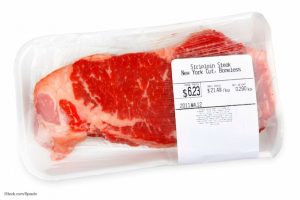The Center for Science in the Public Interest has released a list of meat and poultry products that have the greatest risk of causing foodborne illness outbreaks. They studied 12 years of outbreaks from meat and poultry that occurred in the U.S. from 1998 to 2010. Only illnesses linked to outbreaks that were definitively attributed to meat or poultry product were used in the analysis.
 The Centers for Disease Control and Prevention (CDC) state that 48 million Americans contract some sort of foodborne illness every year, but most are not known because they are either “sporadic”, not linked to an outbreak, or are not diagnosed or reported to public health officials. The vast majority of foodborne illnesses don’t require medical attention. And of the illnesses that do require medical attention, many cases aren’t correctly diagnosed, not reported to public health officials, or aren’t fully investigated because of budget cuts at local health departments.
The Centers for Disease Control and Prevention (CDC) state that 48 million Americans contract some sort of foodborne illness every year, but most are not known because they are either “sporadic”, not linked to an outbreak, or are not diagnosed or reported to public health officials. The vast majority of foodborne illnesses don’t require medical attention. And of the illnesses that do require medical attention, many cases aren’t correctly diagnosed, not reported to public health officials, or aren’t fully investigated because of budget cuts at local health departments.
Outbreaks linked to meat and poultry have decreased over the study period. Since 1993, stricter regulatory oversight and litigation has made changes in animal production, slaughter, and processing. CSPI believes that if consumers know which meats have the greatest risk, they can use more precaution when handling them. Other food experts state that all raw meat and poultry is risky and should all be handled with extreme care and caution.
CSPI found that chicken and ground beef are the riskiest meats. Chicken caused 452 outbreaks, making 6,896 people sick during the study time frame. Ground beef caused 336 outbreaks, sickening 3,801 people. Beef, steak, and turkey are classed in the next most risky group. In the medium risk group, barbecue, deli meat, pork, and roast beef are grouped together. And chicken nuggets, ham, and sausages are in the low risk category.
The top pathogens found in chicken include Clostridium perfringens, Salmonella, and norovirus. Salmonella contamination in poultry occurs during slaughter and processing. Changes to USDA’s poultry inspection practices through HIMP might increase the risk of this type of contamination. The top pathogens found in ground beef include E. coli O157:H7, Clostridium perfringens, and Salmonella.
These risks reinforce the need to handle meat products correctly. Never rinse chicken or other poultry in the sink before cooking. Cook it thoroughly to at least 165 degrees F. Avoid cross-contamination with chicken juices and ready to eat products. Never serve hamburgers cooked less than well done, or 160 degrees F. Wash your hands thoroughly after handling raw meats, and disinfect utensils, platters, cooking equipment, and kitchen surfaces. And use a food thermometer to make sure the meats have reached a safe internal temperature before eating.




